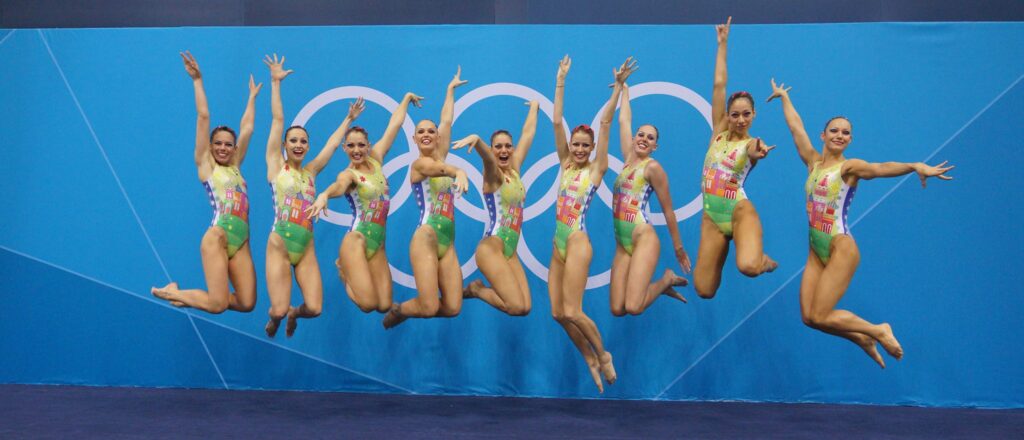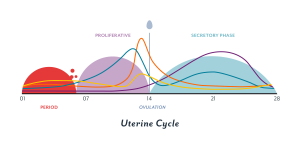The Female Athlete
What You Should Know to be at Your Best
Compiled by Physio, Australian Olympian (Synchronised Swimming) & Physio Yoga, Sarah Bombell

From the earliest days of sport, women were considered to be too delicate and fragile to participate. For a long time it was not considered possible or accepted for women to be strong and athletic. We now know that women’s bodies are capable of amazing athletic feats. However women are not small men and therefore female athletes should not be managed the same as their male counterparts.Until the early 80s it was thought that the physiological responses to exercise were the same for men and women. For this reason the vast majority of exercise physiology research has been performed on men and hasn’t taken into consideration the fluctuations of the female sex hormones. These hormones can influence many of the body’s processes including metabolism, muscle synthesis, bone adaptation, exercise capacity and recovery.
Puberty
Changes between male and female athletes begins at puberty, the stage of life were we mature from children into adults with the release of sex hormones. This generally occurs at age 12-16 in males and age 11-14 in females. The age that puberty occurs can be affected by a number of factors including genetics, environment and body weight. The process can be delayed with heavy training and inadequate nutrition in the young athlete. As males reach puberty the release of testosterone leads to boys becoming fitter, stronger, faster and more aggressive..…all attributes that are favourable for athletic performance. However as girls reach puberty the increase in estrogen and progesterone causes mood changes like anxiety, depression and sensitivity. Their body shape also begins to change. The hips widen with an increase in body fat, which completely changes their centre of gravity affecting mechanics. These changes cause a decline in speed, power, coordination and performance. There is also an increased risk of injury at this stage of development due changes in body shape. During adolescence it is important to acknowledge that the decline in performance for females is temporary and the focus of training should be shifted towards perfecting technique and efficiency.
The female menstrual cycle
Girls still begin menstruation approximately 2.5 years after the onset of puberty, however around 50% of girls will not have a regular cycle for up to 4.5 years after initial onset. This fact is important as many young girls are put on the oral contraceptive due to irregular periods, however they haven’t had enough time to potentially settle into regular cycle. Generally the menstrual cycle lasts for 28 days, however this can vary from person to person. There is a low hormone follicular phase, followed by a high hormone luteal phase. Day one of the cycle is the first day of the period. The first 14 days of the cycle is the low hormone or follicular phase. Just before ovulation there is a surge in estrogen followed by a surge in luteinising hormone. This triggers ovulation which involves release of an egg ready to be fertilised. After ovulation during the luteal phase there is an increase in estrogen and progesterone before these hormones decrease again at the end of the cycle where menstruation happens again.
Female Sex hormones and athletic performance
During the low hormone phase, the female is most like the male, meaning their physiology is favourable for hard training or competition. This is the time when you want to schedule the higher intensity cardiovascular or strength sessions as the physiology is optimal for performance and recovery.
During the high hormone phase the increase in estrogen and progesterone causes increased fluid retention, decreased insulin sensitivity, decreased access to muscle glycogen, increased blood viscosity, increased respiration rate and increased protein breakdown. For these reasons athletic performance and the ability to recover will diminish. This is the time for the athlete to do the longer, slower aerobic sessions with a de-load optimally 5-7 days before the period starts.
So you can see that the average 4 week menstrual cycle is actually optimal for periodising training for the female athlete . Therefore getting to know your cycle will help you work with your physiology not against it.
What if I’m on the pill??
We know the use of synthetic hormones supress the natural sex hormones. This stops the natural menstrual cycle, stops ovulation therefore preventing a female from getting pregnant. Apart from this action, it is not fully understood how these synthetic hormones affect other systems of the body. While on the pill there are small spikes of synthetic estrogen and progesterone daily for 21 days (with no follicule stimulating hormone or lutinising hormone) until the pill free period. During this time there is a small rebound of the natural hormones and a withdrawal bleed which mimics mensuration. Regarding sport and performance there is research to show that the oral contraceptive is associated with decreased VO2peak, decreased cardiac output, decreased peak power, decrease anaerobic adaptation, increased oxidative stress and inflammation, decreased protein synthesis, and increased muscle mass but not strength. The timing of the pill and training/competition can also affect performance. If the pill is taken before exercise then this creates a high hormone state which we know is not favourable for peak performance. It is recommended that unless you need to be on the oral contraceptive for medical reasons, then its best to work with your natural physiology.
Menopause
When menopause is reached there is a flat line of estrogen and progesterone. During menopause the changes in sex hormones causes decreased protein synthesis, decreased bone mineral density, and increased subcutaneous and intramuscular fat. The body also becomes less sensitive to anabolic stimuli, meaning it takes more stimulus to build or even maintain muscle. For this reason it is extremely important for women who are peri-menopausal or post-menopausal to increase their protein intake and lift heavy!! Adequate nutrition and resistance training is the only way to maintain muscle mass at this stage of life, and is extremely important for quality of life in later years. For the mature athletic population maintaining muscle mass is essential for performance, even the endurance athlete should include strength training in their program as the long runs aren’t enough stimulus for maintaining or building muscle. Along with strength training, adequate protein intake is required for muscle synthesis and the in the menopausal years the need for protein increases especially post exercise for adequate recovery.
Diet
Many of the popular fad diets like intermittent fasting and the ketogenic diet claim to have plenty of scientific evidence to back up their efficacy. Just like the exercise physiology research, the information we have about these diets is based off research done mostly on men. In fact these diets can actually be detrimental for the female and her well being. As females aren’t good at sparing glycogen (which is the carbohydrate energy we sore in our muscles), carbohydrate intake through diet is extremely important for performance. Also as females have more difficulty building and maintain muscle, protein intake is often under prescribed. A good balanced diet with adequate nutrition both before and after training is most important for not only performance, but also recovery and injury prevention.
The information from this article has been summarised from the work of Dr Stacey Sims. If you’re interested in learning more about how to work with the female athlete it’s highly recommended to read her book “ROAR: How To Match Your Food And Fitness to Your Unique Female Physiology for Optimum Performance, Great Health and a Strong, Lean Body for Life”


































